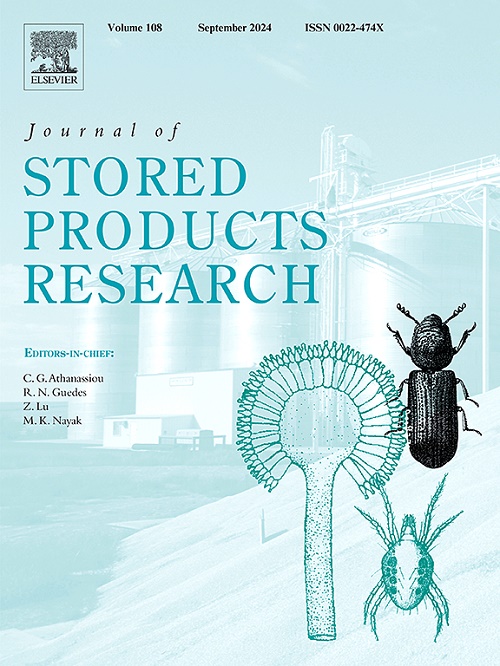Investigating UV-C radiation as a non-chemical method to prevent quality loss in the pea seed during storage
IF 2.7
2区 农林科学
Q1 ENTOMOLOGY
引用次数: 0
Abstract
This research investigates the impact of ultraviolet-C (UV-C) radiation exposure (5, 10, and 20 min) on the quality and storability characteristics of pea (Pisum sativum L.) seeds, focusing on technological properties (moisture content, bulk density and thousand grains weight), color stability (L∗, a∗, b∗, chroma and hue angle), ash content, and mineral composition (calcium, potassium, magnesium, phosphorus, and zinc). Seeds were stored at three different temperatures (15 °C, 20 °C, and 25 °C) for periods ranging from 0 to 360 days, with assessments conducted at 90-day intervals. The results demonstrate that UV-C treatment plays a significant role in maintaining seed quality throughout storage. Seeds exposed to 20 min of UV-C radiation and stored at 15 °C retained the highest moisture content and showed the least color degradation, particularly in terms of lightness (L∗) and chroma values. In addition, UV-C exposure positively influenced the mineral composition, particularly calcium and potassium content, which showed increased levels under UV-C treatments. However, magnesium and zinc levels were more variable, with some reductions observed over extended storage durations. The optimal conditions for preserving seed quality were found to be 20 min of UV-C exposure combined with storage at 15 °C for up to 270 days. These findings suggest that UV-C radiation, combined with controlled storage conditions, can effectively enhance the long-term quality of pea seeds, offering a sustainable, non-chemical method for the agricultural industry.
求助全文
约1分钟内获得全文
求助全文
来源期刊
CiteScore
5.70
自引率
18.50%
发文量
112
审稿时长
45 days
期刊介绍:
The Journal of Stored Products Research provides an international medium for the publication of both reviews and original results from laboratory and field studies on the preservation and safety of stored products, notably food stocks, covering storage-related problems from the producer through the supply chain to the consumer. Stored products are characterised by having relatively low moisture content and include raw and semi-processed foods, animal feedstuffs, and a range of other durable items, including materials such as clothing or museum artefacts.

 求助内容:
求助内容: 应助结果提醒方式:
应助结果提醒方式:


